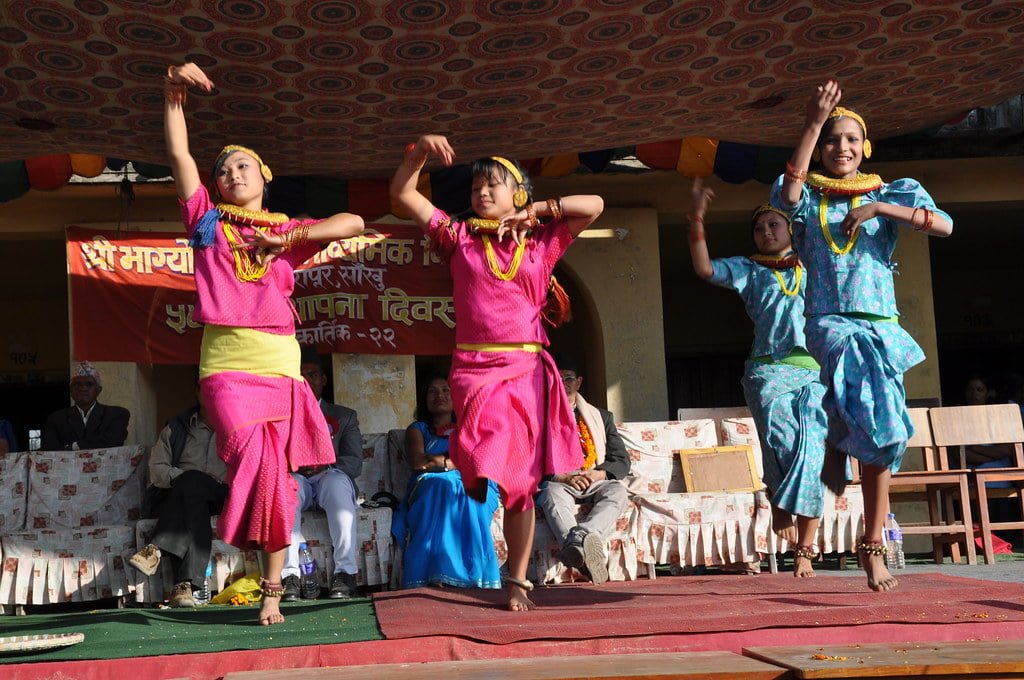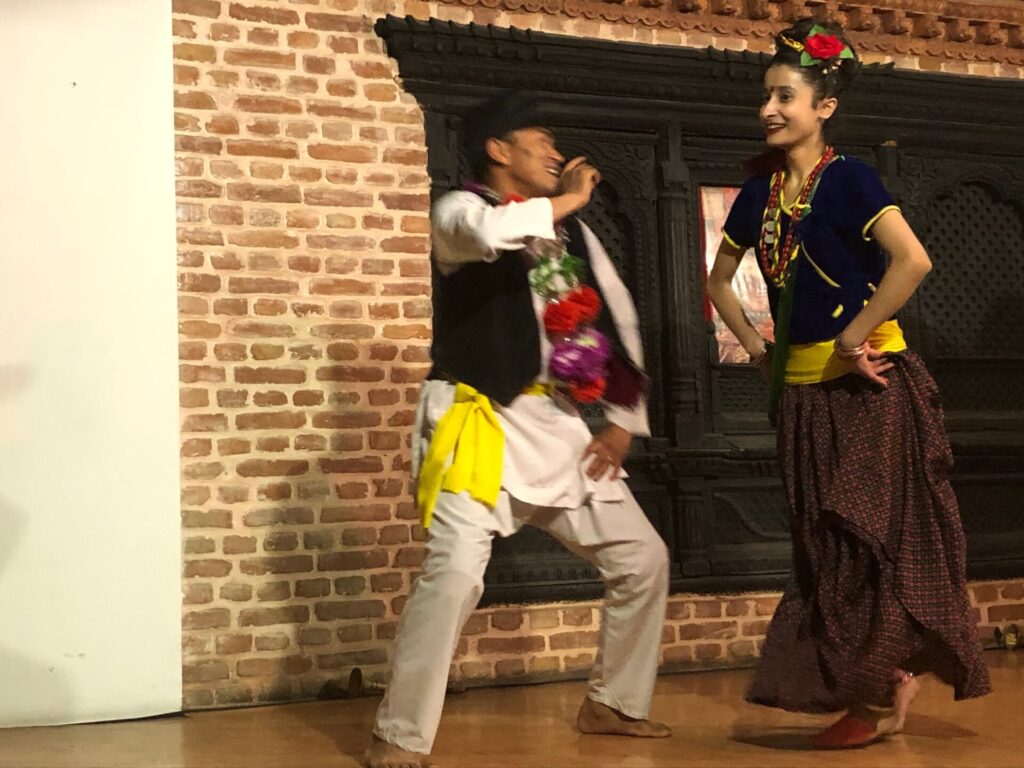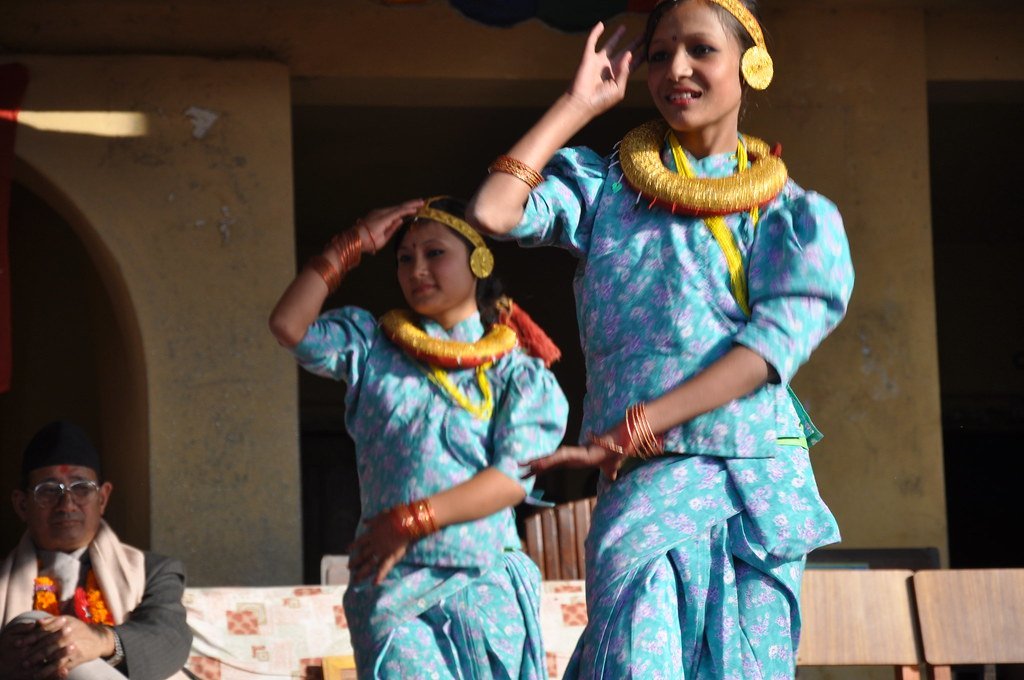Nepali Traditional Dance Shows
Nepal is a country rich in cultural heritage, and one of the most captivating aspects of its culture is traditional Nepali dance. These dance forms, passed down through generations, reflect the country’s diverse ethnic groups and their unique traditions. Nepali traditional dance shows provide a glimpse into the vibrant and colorful world of Nepali culture, captivating audiences with their mesmerizing performances.
One popular traditional dance form in Nepal is Maruni. Originating from the eastern region of the country, Maruni is also performed in Sikkim, Darjeeling, Assam, Bhutan, and Myanmar. It is considered the oldest and most famous dance of the Nepalese community residing in these areas. Maruni dance is characterized by its graceful movements, colorful costumes, and intricate footwork. The dancers, usually women, perform in groups and tell stories through their movements and expressions. This dance form is often performed during festivals and special occasions, bringing joy and entertainment to the community.
Another traditional dance form that showcases the cultural diversity of Nepal is the Newari dance. The Newari people, an ethnic group native to the Kathmandu Valley, have their own unique dance styles that are deeply rooted in their rich cultural heritage. Newari dances are known for their rhythmic footwork, expressive gestures, and vibrant costumes. These dances often depict mythical stories, historical events, and religious rituals. Newari dance shows are a visual spectacle, immersing the audience in the traditions and beliefs of the Newari community.
The Tharu community, residing primarily in the Terai region of Nepal, has its own distinct traditional dance forms. Tharu dances are energetic and dynamic, characterized by fast-paced movements and vibrant costumes. These dances reflect the agricultural lifestyle of the Tharu people and often depict scenes from their daily lives, such as farming, fishing, and traditional ceremonies. Tharu dance shows are a celebration of the community’s resilience and cultural identity, showcasing their unique traditions to audiences.
Visitors to Nepal have the opportunity to experience these mesmerizing traditional dance shows firsthand. Kathmandu, the capital city, is a hub for cultural performances and hosts numerous dance events throughout the year. Restaurants like Utsav offer traditional Nepalese food along with live performances by Nepali artists, providing a complete cultural experience for visitors. These dance shows not only entertain but also offer a window into the rich heritage of Nepal, allowing visitors to appreciate the country’s diverse traditions and artistic expressions.
Nepali traditional dance shows are a testament to the country’s cultural richness and diversity. They showcase the unique traditions and customs of different ethnic groups, captivating audiences with their grace, beauty, and vibrant performances. Whether it’s the enchanting Maruni, the rhythmic Newari, or the dynamic Tharu dances, these shows offer a glimpse into the soul of Nepal, leaving a lasting impression on all who witness them.
Celebrating Ethnic Diversity Through Folk Dance
Folk dances in Nepal are a true representation of the country’s multiethnic and multicultural background. They serve as a vibrant expression of the different ethnic communities and their unique traditions. These dances not only entertain and captivate audiences but also play a significant role in preserving and promoting cultural identity.
The celebration of ethnic diversity through folk dance extends beyond the borders of Nepal. Nepali folk dance groups, like the Dance Theater of Nepal, actively engage in cultural exchanges and perform internationally, spreading awareness and appreciation for Nepali culture worldwide.
One notable event is the UK inter-universities Nepali societies national annual dance competition. This competition brings together talented dancers who passionately portray the different ethnic cultures of Nepal. With stunning costumes and innovative choreography, these performances beautifully capture the essence of Nepali dance. From traditional folk dances to contemporary and experimental styles, the competition showcases the versatility and richness of Nepali dance forms.
These annual dance competitions not only promote cultural exchange but also foster a sense of community among the participants. Dancers from different backgrounds come together to learn from one another, appreciate each other’s artistry, and create lasting connections. It is a testament to the power of dance in bridging cultural gaps and promoting unity.
Apart from the inter-university competition, there are various other dance events that take place throughout the year in Nepal. These events provide a platform for both amateur and professional dancers to showcase their talent. They serve as a celebration of Nepali culture, bringing together people from all walks of life to witness the beauty and grace of traditional and contemporary dance forms.
Dance workshops are a significant feature of these events, particularly for young Nepalis who strive to learn and preserve their cultural heritage. These workshops offer a chance for the younger generation to connect with their roots, develop their skills, and carry forward the legacy of Nepali dance.

The Peacock Dance: A Bewitching Traditional Dance
One of the most famous and captivating traditional dances in Nepal is the Peacock Dance, also known as Mayur Nanch. This mesmerizing dance is particularly popular in the Mid-Western part of Nepal, specifically in the regions of Rolpa and Rukum. The Peacock Dance holds deep cultural and historical significance and is considered a long-standing tradition in these communities.
The Peacock Dance is performed by a group of twelve individuals who carry feathers of a peacock on their backs. The dancers are usually paired into a man and a woman, symbolizing the beauty and grace of the peacock. The dancers meticulously choreograph their movements to portray the elegance and charm of the majestic bird.
The origins of the Peacock Dance can be traced back ancient times, making it a cherished part of Nepali culture. The dance not only serves as a form of entertainment but also holds spiritual significance. It is believed that the dance invokes blessings from Lord Shiva and Goddess Parvati for success, peace, and good crops for the village.
One of the most enchanting aspects of the Peacock Dance is the vibrant costumes worn by the performers. The dancers adorn themselves with traditional attire, reflecting the rich cultural heritage of Nepal. The combination of colorful costumes and the swaying peacock feathers creates a visually stunning spectacle that captivates the audience.
The Peacock Dance is a testament to the diversity and richness of Nepali culture. It showcases the country’s ability to preserve and promote traditional dance forms, ensuring that future generations can learn and appreciate their heritage. The dance serves as a link between the past and the present, connecting people to their roots and reminding them of the glorious history of Nepal.

The Intriguing Masked Dances of Nepal
One of the most popular masked dances in Nepal is the Mahakali Dance. This dance is based on a religious story from a Hindu Puran called ‘Mahakali Mahalaxmi’. According to this story, the three goddesses Mahakali, Mahalaxmi, and Kumari, who protect the eight directions of Kathmandu Valley, descend from heaven to vanquish the demons that spread great misery. The performers wear elaborate masks depicting these goddesses and enact the story through their mesmerizing dance movements.
Another prominent masked dance in Nepal is the Lakhey Dance. Lakhey is believed to be a devil who guards his territory and chases away other devils. During the Indra Jatra festival, which takes place in September every year, the Lakhey Dance is performed to collect charity. The dancers wear fearsome masks of Lakhey and perform energetic and acrobatic movements, captivating the audience with their skill and precision.
Apart from these, there are several other traditional masked dances in Nepal that showcase the country’s rich cultural heritage. These dances are deeply rooted in religious beliefs and are performed with utmost devotion and reverence. The masks used in these dances are intricately designed and represent various deities, mythological characters, and spirits.
The Mask Dances of Nepal not only serve as a form of entertainment but also play a significant role in preserving and promoting the country’s cultural identity. These dances have been passed down through generations and continue to be performed with great enthusiasm and passion. They provide a glimpse into the spiritual and mythological beliefs of the Nepali people and offer a unique and captivating experience for both locals and tourists.

